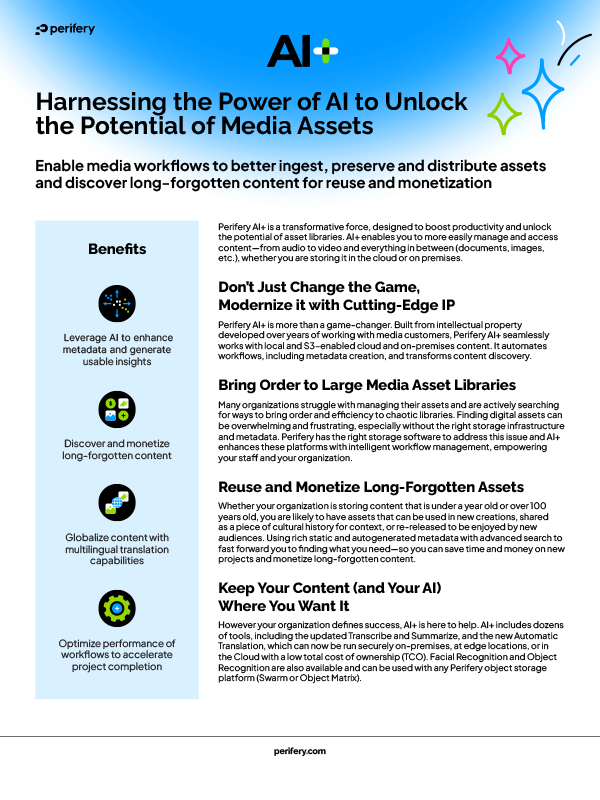
Media libraries are goldmines of content, holding vast amounts of valuable audio and visual assets ready to be reused, redistributed, and remonetized. However, efficiently managing a rapidly expanding volume of digital content in the world of media and entertainment (M&E) is becoming more challenging. To fully exploit the content that lives in media archives, organizations need to ensure their repositories remain searchable and accessible. After all, if your media assets can’t be retrieved and reused, what value do they really hold?
Needle in a Haystack
Consider each media asset as a needle in a digital haystack. The problem lies not in the accumulation of thousands of individual objects, nor in finding a place to store them; the real challenge arises when needing to search for and retrieve specific pieces of content.
So, how do we overcome the problem? Quite simply: with metadata enrichment.
Efficient content discovery relies on metadata – the descriptive information that provides the context for each media object. At the basic level, this information includes details such as the object size, format, and date of generation. However, enriching that metadata goes deeper, allowing you to fully optimize the organization, management, searchability, and usability of your media. Metadata enrichment helps you navigate through expansive media archives to find specific content faster. On top of the technical details, enriched metadata adds layers of advanced context that makes content discovery intuitive and meaningful. Descriptive tags can be added to each asset, such as characteristics, names, and emotional attributes, to streamline filtering and enhance search precision.
Strategies for Metadata Enrichment
1. Manual Enrichment
Manual metadata enrichment involves human intervention to add context, tags, and descriptors to each media asset. It is essential for certain contexts, particularly where a deep understanding of content is needed or when dealing with highly specialized or sensitive content that demands precision and care.
While a manual approach allows for a personal touch, it can be time-consuming, prone to error, and less scalable, especially when dealing with large volumes of media content.
2. Automated Enrichment
Automated metadata enrichment leverages artificial intelligence (AI) and machine learning (ML) algorithms to streamline the process. This approach utilizes pattern and context identification to autonomously enrich metadata. AI/ML can rapidly process large volumes of content to ensure consistency and accuracy, with additional benefits of automation including efficiency, scalability, and cost-effectiveness.
3. A Combined Approach
Combining the precision of manual enrichment with the efficiency of automation can create a power symbiosis. While automation takes care of the repetitive tasks, human intervention focuses on aspects that demand a nuanced understanding. This hybrid mix can ensure accuracy, relevance, scalability, and consistency.
The Value of Media
To fully optimize media workflows and get maximum value from assets, metadata enrichment is crucial. Media teams face many challenges and inefficiencies when managing large libraries of content, however, it doesn’t have to be that way.
Perifery’s nearline archive solutions, applications and AI solutions put the focus back on performance, usability, and reliability. From media-focused object storage to innovative AI technology, Perifery’s solutions are designed to enrich and future-proof content and metadata, allowing media professionals to increase productivity, enhance efficiency and accuracy, and unlock the true value of their media.
Meet the Perifery team at the HPA Tech Retreat, Feb 18-22 in California, and discover how you can fully exploit your media archives. Secure your meeting now.
